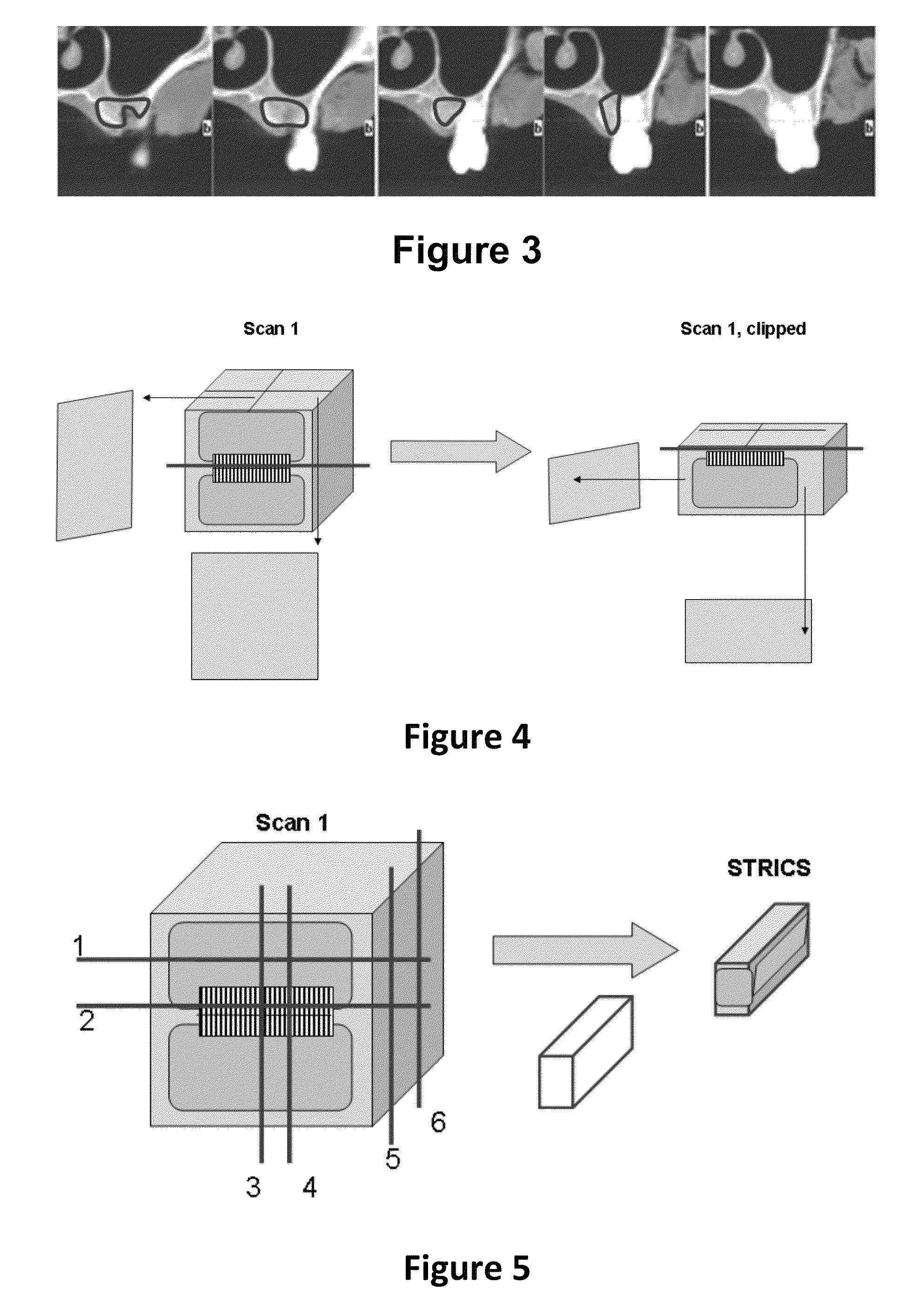Method for quantifying local bone changes
a local bone and change technology, applied in the field of local bone change quantification, can solve the problems of periapical bone loss inflammation, tooth loss, tooth loss, etc., and achieve the effect of avoiding the formation of buccal and oral bone, and avoiding the formation of periapical bon
- Summary
- Abstract
- Description
- Claims
- Application Information
AI Technical Summary
Benefits of technology
Problems solved by technology
Method used
Image
Examples
example 1
[0133]By way of illustration, embodiments of the present invention not being limited thereby, an experimental example is discussed below, illustrating features and advantages of embodiments of the present invention. The example illustrates, for the determination of the bone volume follow-up method, an in-vitro pre-test whereby accuracy is evaluated (see FIG. 16). A dry skull with soft tissue simulation modelled over the jaws served as subject. A defect was created with a round steal bur at the maxillary left central incisor level to simulate bone loss. A pre-scan was first taken before defect creation. After defect creation (with buccal occlusal keys to preserve the buccal contour), heated wax modelled into the defect and covered with the buccal key. In this wax, a negative of the defect could be created. Then, the obtained defect key was optically scanned with a laser scanner at a resolution of approximately 40 micron. Now the volume of the defect could be calculated in mm3 and a p...
PUM
 Login to View More
Login to View More Abstract
Description
Claims
Application Information
 Login to View More
Login to View More - R&D
- Intellectual Property
- Life Sciences
- Materials
- Tech Scout
- Unparalleled Data Quality
- Higher Quality Content
- 60% Fewer Hallucinations
Browse by: Latest US Patents, China's latest patents, Technical Efficacy Thesaurus, Application Domain, Technology Topic, Popular Technical Reports.
© 2025 PatSnap. All rights reserved.Legal|Privacy policy|Modern Slavery Act Transparency Statement|Sitemap|About US| Contact US: help@patsnap.com



